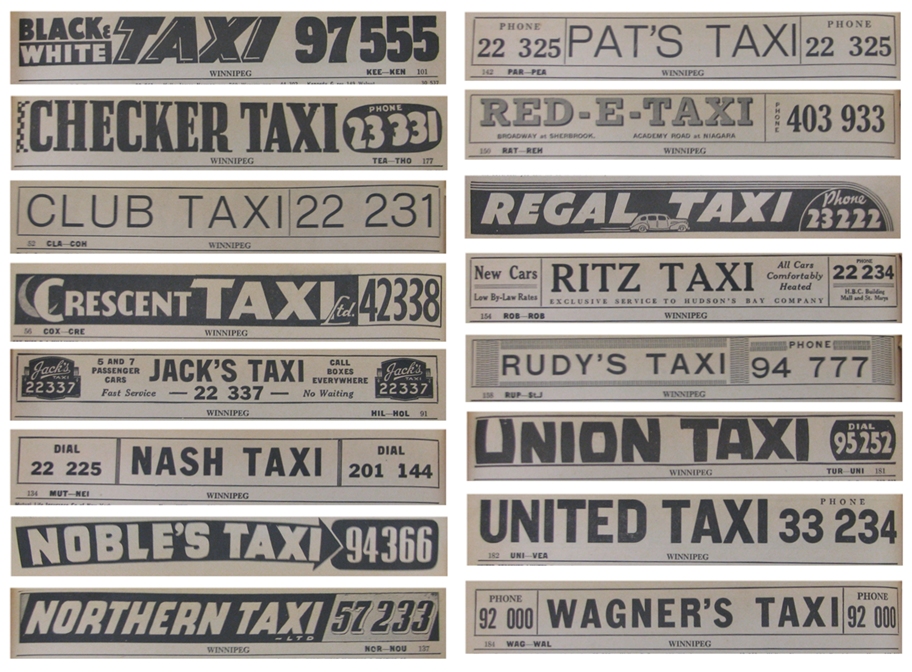



Click on the picture to see a larger version. Some of the more than 50 taxi companies listed in the 1938 Winnipeg telephone book. These were the survivors of the Winnipeg taxi war. Most were small one- and two-cab companies, but not even the largest of them could seriously challenge Moore's.
Source:
Manitoba Telephone System, Official Directory – Greater Winnipeg, no. 91, July, 1938, opposite p. 33.
Winnipeg Cab History / 70
The Winnipeg Taxi War (10)
Soon after it was created the Manitoba Taxicab Board instituted a quota on cab licenses at a ratio of one taxi to one per thousand people. This quota combined with compulsory meterization drove many people out of the cab business.
The measures came too late to save Diamond, which went out of business in 1934, but other old-line companies survived. In fact, the 1938 Winnipeg telephone directory listed more than 50 taxi companies, more than in any previous year. It may have been that weeding out the most impoverished cut-throat operators made taxi ownership attractive to slightly more prosperous individuals who had the means to comply with Taxicab Board regulations.
Bradley's Taxi lasted until 1947. Black & White was taken over by Moore's in 1947 but did not disappear as a brand until 1951, the same year that Yellow Taxi was launched. Yellow took over the old Black & White premises at 275 Smith, the site of the Fleetwood Stable in the horse cab era.
However, the surviving "old line" companies did so only as small fish in a pond dominated by Moore's Taxi. Moore may have opposed the new regulatory regime but it had no effect on his dominance or his knack for innovation. He introduced radio cabs to Winnipeg in 1947, "proving yet again that he could lead the pack, whatever the rules of the game, whether they be those of a taxi war or its cartel settlement." (Davis)
